|
Flow Meter/Flow measurement
Flow measurement is the quantification of bulk fluid movement. Flow can be measured in a variety of ways.
Positive-displacement flow meters accumulate a fixed
volume of fluid and then count the number of times the volume is filled to
measure flow.
Other flow measurement methods rely on forces produced by
the flowing stream as it overcomes a known constriction, to indirectly calculate
flow. Flow may be measured by measuring the velocity of fluid over a known area.
https://en.wikipedia.org/wiki/Flow_measurement |
The Role of Control Systems In The Gas And Oil Industries
Control is an
essential element in the industries which operate within the surveillance for,
and extraction of fossil fuels.
As technologies advance, we are offered an increasing
armory in ways to solve engineering problems and create more accurate and
efficient processes at the same time. But with more extreme demands being placed
on equipment in the gas and oil industries and an increasing need for durability
and reliability, support equipment in these industrial control systems becomes
more pivotal to ensuring the smooth-running of these procedures.
http://flowmetrics.com/role-control-systems-gas-oil-industries/#more-1813
- Capturing
Accuracy
- The Role
of The Signal Controller
- Conversion
and Enhancement of a Data Stream
-
A
Question of Power Supply
-
Free Power for All
Leading with Quality, Performance and Cost
Our partners, the
Flowmetrics Inc. is a leading manufacturer of flow meters and associated
flow computers.
Specifically, we provide in-line and insertion flow
meters :
-
Turbine flow meters
-
Variable area flow meters
(rotameter)
-
Positive displacement flow meters
-
MAG/RF pickups
-
Ratemeters
-
Totalizers
-
Batch controllers
-
Flow computers
-
Field indicators
-
Signal conditioners
|
Our turbine flow meters are available in sizes from 1/2" to 12" and are capable
of measuring liquid flow rates from .001 to 15,000 GPM and gas flow rates from
.005 to 15,000 ACFM.
For more than 35 years, Flowmetrics has been recognized
for superior flow measuring products/services and specialized fluid flow
systems.
Flowmetrics has on-site testing and calibration
laboratories for flow meters to service any type or brand of flow meter.
|
|
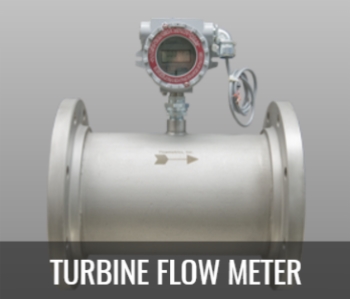
|
Turbine Flow Meter
APPLICATIONS
-
Aerospace and
Automobile fuel consumptions
-
Natural Gas in
industrial applications
-
Hydraulics
- High-temperature,
High-pressure, and High Shock
- Ultra-pure water in
pharmaceuticals
- Petrochemicals
- Batching, Mixing, and
Hygenic
- Custody transfer
-
Cryogenics
FEATURES
- Exceptionally reliable digital outputs.
- Used for a variety of liquid and gas flow sensing applications
- Sizes availble for 1/2 inch to 12 inches
- Offers high turn-down with minimum uncertainty and very
repeatable output
- Ideal for fluids with viscosities of 500 cst or less for 2 inch
and larger flowmeters
- Ideal for fluids with viscosities of 200 cst for smaller than 2
inch flowmeters.
- Quick response time, Low rotor inertia
- Suitable for measuring fluctuating flows
- Requires digital readout for pulsating flows.
SPECIFICATIONS
The Flowmetrics Tangential turbine flowmeter is a unique
volumetric device.
This uses a dual orifice design to direct a stream of
fluid tangent
to a low mass/balanced rotor and a precision bearing to
provide maximum sensitivity.
- Exceptionally reliable digital outputs.
- Used for a variety of liquid and gas flow sensing applications.
- Well suited to meet a variety of process media.
- Capable of measuring extremely low flow rates(.001 GPM liquids
and .001 ACFM in gases).
- High output and low drag magnetic pickoffs.
- Zero drag modulated carrier pickoffs.
- Bearing to suit specialized applications.
- NIST traceable calibration.
|
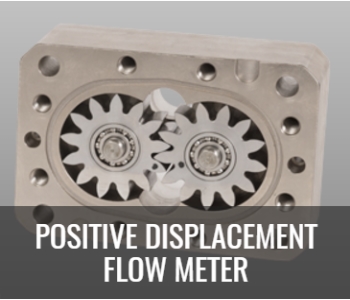
|
Positive Displacement Flow Meter
APPLICATIONS
- Hydraulic Test Stands (Low Viscosity)
- Aerospace and Automotive (Low to Medium Viscosity)
- Batching and Mixing (Medium Viscosity)
- Petrochemical (Medium to High Viscosity)
- Lubrication Oil Blending (High Viscosity)
CONSTRUCTION
- HOUSING: Ductile Iron (Nickel Plated)
- COVER: 304 Stainless Steel
- GEAR: 416 Stainless Steel
- PICKUP SENSOR: 303 Stainless Steel Housing with Solid Epoxy
Encapsulation
- MATING CONNECTOR: MS 3102A-10SL
- BEARING: 440C Stainless Steel .
PRINCIPLES OF OPERATION
The force of the liquid moving through the flow meter
drives the measuring gears. The liquid stream is divided into the fixed volume
cavities between the gear teeth and metering body.
The movement of gear is measured by means of a pick-up
sensor located in the cover. When the measuring gears rotate by one tooth pitch,
the sensor emits a signal/frequency, which corresponds to the geometrical tooth
volume. The signal is converted into a square wave pulse by the pre-amplifier.
The pulse or frequency output are processed by secondary
instruments ranging from a basic signal conditioner, indicator/totalizer to more
complex flow computers, which compensate temperature, pressure, density,
viscosity and provide accurate volumetric or mass flow measurement.
|

|
Variable
Area Flow Meter
A rotameter is a device that measures the flow rate of fluid in a
closed tube.
It belongs to a class of meters called variable area meters,
which measure flow rate by allowing the cross-sectional area the fluid travels
through, to vary, causing a measurable effect.[1]
https://en.wikipedia.org/wiki/Rotameter
Advantages[edit]
- A rotameter requires no external power or fuel, it
uses only the inherent properties of the fluid, along with gravity, to measure
flow rate.
- A rotameter is also a relatively simple device
that can be mass manufactured out of cheap materials, allowing for its
widespread use.
- Since the area of the flow passage increases as
the float moves up the tube, the scale is approximately linear.[1]
- Clear glass is used which is highly resistant to
thermal shock and chemical action.
Disadvantages[edit]
- Due to its reliance on the ability of the fluid or
gas to displace the float, graduations on a given rotameter will only be
accurate for a given substance at a given temperature. The main property of
importance is the density of the fluid; however, viscosity may also be
significant. Floats are ideally designed to be insensitive to viscosity;
however, this is seldom verifiable from manufacturers' specifications. Either
separate rotameters for different densities and viscosities may be used, or
multiple scales on the same rotameter can be used.
- Due to the direct flow indication the resolution
is relatively poor compared to other measurement principles. Readout uncertainty gets worse near the bottom of the
scale. Oscillations of the float and parallax may further increase the uncertainty
of the measurement.
- Since the float must be read through the flowing
medium, some fluids may obscure the reading. A transducer may be required for
electronically measuring the position of the float.
- Rotameters are not easily adapted for reading by
machine; although magnetic floats that drive a follower outside the tube are
available.
- Rotameters are not generally manufactured in sizes
greater than 6 inches/150 mm, but bypass designs are sometimes used on very
large pipes.[1]
SERIES 2000 INDUSTRIAL
The Flowmetrics 2000 Series Variable Area Flow Meter is a rugged industrial Flow
Meter available in a wide range of liquid and gas flow rates.
SERIES 2600 INDUSTRIAL
The Flowmetrics 600 mm Single Flow Metering panel offers the highest precision
available in our product line. Each meter is provided with a direct-reading,
custom-engraved scale mounted adjacent to the metering tube. Flowmetrics’ scales
are generated from data obtained in calibrations using fluid which simulates as
closely as possible the customer’s process.
SERIES 4600 INDUSTRIAL
The Flowmetrics 600 mm Multi-Stage Flow Metering panel offers the highest
precision available in our product line of variable area Flow Meters. Each meter
is provided with a direct-reading, custom engraved scale mounted adjacent to the
metering tube. Flowmetrics’ scales are generated from data obtained in
calibrations using fluid which simulates as closely as possible the customer’s
process.
SERIES 3000 HIGH-PRESSURE
Flowmetric’s in-line Flow Meter is simple to install and can be installed
directly into horizontal or vertical lines.
Features:
- Stainless steel or aluminum
meter
- Seals: Viton, Buna, Teflon,
Neoprene, or EPR
- Pressure rating: 5,000 psi
maximum
- Temperature rating: 240°F
maximum
- Standard scale: GPM
graduations
- Range: 0-5 GPM; 0-10 GPM;
0-20 GPM; 0-40 GPM; 0-80 GPM
- Accuracy: ± 2% F.S.
- Repeatibility: ± 1%
- Special scales available
- High and Low Alarms –
OPTIONAL
- Insensitive to shock and
vibration
- One year limited warranty
|
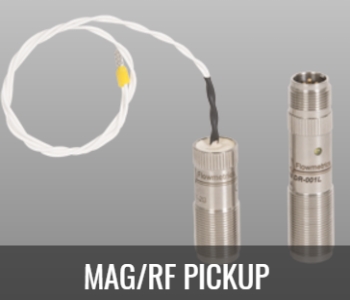
|
MAG/RF Pickup
A pickup device is a transducer (specifically a variable reluctance sensor) that
captures or senses mechanical vibrations .....
https://en.wikipedia.org/wiki/Pickup_(music_technology)
Premium Magnetic Pickups
These pickups are suited for harsh environments and years
of reliable service. They
are hermetically sealed for resistance to moisture and
other atmospheric
contamination and can withstand repeated thermocycling in
temperatures ranging
from -450°F to 450°F. These pickups are also being used
in cryogenics for their ability
to operate dependably at extremely low temperatures for
long periods of time.
Features like glass sealed connectors, unique internal
potting, and high quality
magnets that resist demagnetization, make these pickups
the best choice for
demanding environments.
These pickups are available in standard and ruggedized
grades. Ruggedized pickups
undergo a internal construction process that enables them
to better tolerate rigorous
conditions that would cause other pickups to fail (e.g.
excessive vibrations, impact and
repeated thermocycling).
Standard Features and Specifications
•
Variable reluctance or inductive type
•
Hermetically sealed, heli-arc welded construction
• 2
pin, gold plated, glass sealed connector (mate:MS3106-10SL-4P)
• 300
stainless steel housing (locknut included)
•
Magnet that resists demagnetization
•
Unique potting that compensates for temperature extremes
•
Temperature range -450°F to 450°F (-270°C to 232°C)
• IR
leakage: 100 megaohms @ 100 Vdc minimum
• High
signal output
• High
shock and vibration resistance(impact: 25G’s min.; vibration: 2G’s at 2000 Hz
min.)
Humbucking Magnetic Pickups
Intrinsically Safe Magnetic Pickups
High Temperature Magnetic Pickups
Modulated Carrier (RF) Pickups
Intrinsically Safe (RF) Pickups
High Temperature RF Pickups (RF) Pickups
Digi-Pulse Magnetic and RF Pickups
Intrinsically Safe Digi-Pulse Pickups
Pickups with RTD, Magnetic and RF
All Pickups Catalog
|

|
Ratemeters &
Totalizers
Data acquisition is the process of
sampling signals that measure real world physical conditions and converting the
resulting samples into digital numeric values that can be manipulated by a
computer. Data acquisition systems, abbreviated by the acronyms DAS or DAQ,
typically convert analog waveforms into digital values for processing. The
components of data acquisition systems include:
- Sensors, to convert physical parameters to electrical signals.
- Signal conditioning circuitry, to convert sensor signals into a
form that can be converted to digital values.
- Analog-to-digital converters, to convert conditioned sensor
signals to digital values..
https://en.wikipedia.org/wiki/Data_acquisition
912-MRT
Features
• Separate Scaling Factors For A & B
Inputs
• Display Rate & Total
• Pulse Input - 10 kHz Max.
• RS422/RS232 Serial Communication (optional)
• Modbus RTU RS422/RS485/RS232 (optional)
• NEMA 4X / IP65 Front Panel
• Separate Add/Subtract Simultaneous Inputs
• Quadrature and Up/Down Direction Control Inputs
(optional)
• 30mV Magnetic Pickup Inputs (optional)
Application:
Any rate, total or blending application where 2 preset
alarms and scaling are required.
918-RTP
913-DRT
913-DRT RATEMETER CATALOG SHEET & OPERATOR’S MANUAL
920-KRT8
912-MC
|
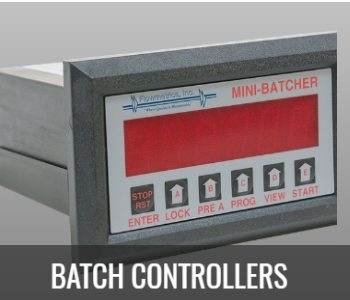
|
Batch Controllers
914-MB2
921-BT2
923-ST1
923-ST1 Features:
•
EZSetup”Guided Setup for First Time Users
•
Rate/Total and Batching Functions
•
Menu Selectable Hardware & Software Features
•
Environmental Compliance Monitoring and Report Generation
•
Universal Viscosity Curve (UVC) and API Eq.
•
Advanced Batching Features : Overrun Compensation, Auto batch Start, PrintEnd of Batch,
Slow Fill, 2
Stage Batching
•
Isolated Outputs Standard
•
RS-232PortStandard,RS-485 Optional
•
Advanced Printing Capabilities
•
Windows™Setup Software
Description:
The 923-ST1 Flow Computer satisfies the instrumentrequirements for a variety of
flow meter types in liquid
applications. Multiple flow equations and instrument
functions are available in a single unit with many advanced features.
Specifications:
Flow Meters and Computations:
Meter Types: All linear and square law meters supported including: vortex,
turbine, magnetic, PD, target, orifice, venturi, v-cone and many others
Linearization: Square root, 16 point table or UVC table.
Computations: Volume, Corrected Volume & Mass
Fluid Computations: Temperature, Density, Viscosity and API 2540 for petroleum
|

|
Flow Computers
Instrument Verification Set (P/N:101199-100) :
Instrument Verification Set (IVS) is a portable instrument verification and
diagnostic measuring tool designed to verify flow, pressure and temeprature of
hydraulic systems and instruments.
- Flow rate is measured by
turbine flow meter, an effective and reliable flow measuring technology.
- Temprature sensor is
Microprcessor based with rugged, currosion-resistant 316L stainless steel
housing .
- Pressure transducer is based on a robust and
long-life thin-film sensor.
- IVS is certified and traceable to NIST.
|
Flow
Rate |
0 to 80
GPM w/ accuracy +/- 0.50% FS |
|
Pressure
Low Range
|
0 to 500
PSI w/ accuracy +/- 0.25% FS |
|
Pressure
High Range |
0 to
6000 PSI w/ accuracy +/- 0.25% FS |
|
Temprature |
-13°F to
257°F w/ accuracy +/- 1.5% FS |
923-ST1 Flow Computer
- The 923-ST1 “EZ-Setup” guided setup for
first time users
- Rate/total and batching functions
- Menu selectable hardware & software features
- Environmental compliance monitoring and
report generation
- Universal Viscosity Curve (UVC) and API
Equations
- Advanced batching features: Overrun comp.
autobatch start, print end, slow fill, 2-stage batching
- Isolated outputs standard
- RS-232 port standard, RS-485 optional
advanced printing capabilities
- DIN Enclosure with two-piece connectors
- On-board data logging
- DDE server & HM software available
- Enhanced modem features for remote metering
- Wall mount enclosure.
924-ST2 Flow Computer
925-ES747 Flow Computer
926-ST1LE Flow Computer
|
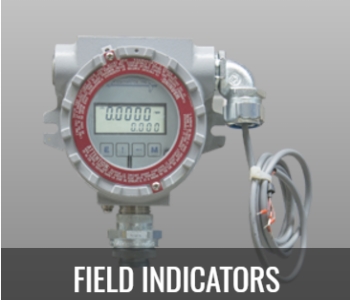
|
Field Indicators
915-BATRT-M
Accepts inputs from Magnetic Pickups, Contact Closures, DC Pulses
Optically Isolated from Pulse Producing Flow Meters
Displays Rate & Total Simultaneously, 5 Digit Rate Display, 8 Digit Totalizer
Display
Powered From Internal Battery, External DC Supply or 4-20 mA Output Loop
20 Point Linearization (optional)
Isolated Scaled Pulse Output
RS485 Modbus RTU Communications and Data Logger (optional)
916-BATDT-M
917-BATRAT-M
202D
Field Indicators Tutorial
Field indicators are signal conditioner/converter devices with a display. Field
Indicators are intended for mounting on or near the flow sensor. They perform
many of the same roles of signal conditioner/converters plus that of providing a
convenient local display.
Many “smart” Field Indicators provide additional, advanced functionality such as
sensor linearization.
Field Indicators are ancillary display devices also intended to amplify, filter,
condition, scale, and convert the low level “raw” signals
produced by many transducers and convert it into the desired, industry standard
high level signal before transmitting it across a potentially noisy environment.
Display indication is also provided. In some cases, a secondary function is
providing signal isolation.....
|
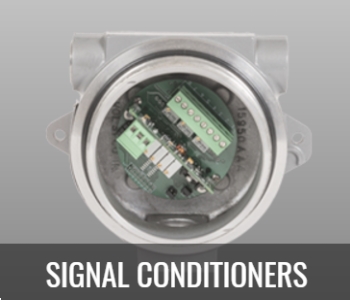
|
Signal
Conditioners
SC-FI SERIES
2-Wire Frequency to Current Signal Conditioner
Features:
• Magnetic Pickup or Contact Closure Input
• Optically Isolated Input
• 10 kHz Maximum Input Frequency
• Standard, 2-Wire, 4-20 mA Output
• Two Year Warranty
• Loop Powered
• Various Mounting Styles
• LED Indicator
Description:
The SC-FI is a two wire frequency to analog converter that converts a pulse rate
input into a 4-20 mA output signal proportional to frequency or rate.
The input pulse rate is amplified and filtered by the input
signal conditioning circuitry. Two forms of input signal conditioning are
provided, one for magnetic pickups or contact closure inputs and the other is an
isolated pulse input (depending on order code).
The amplified frequency signal is then converted to an analog
signal using a precision frequency to analog converter.
The output stage derives it’s power from the output current
loop.
The output stage converts the analog input signal into the
desired output range. Multi-turn potentiometers provide for the necessary
trimming of span and zero.
SC-II SERIES
2-Wire Current to Current Loop Powered Isolator
SC-IF SERIES
2-Wire Current to Frequency Signal Conditioner
SC-FF SERIES
2-Wire Frequency to Frequency Pulse Isolator and Scalar
PA1001A SERIES
Signal Conditioners and Converters
115/230 SERIES
Cased Power Supplies.
|
|
|
|
|